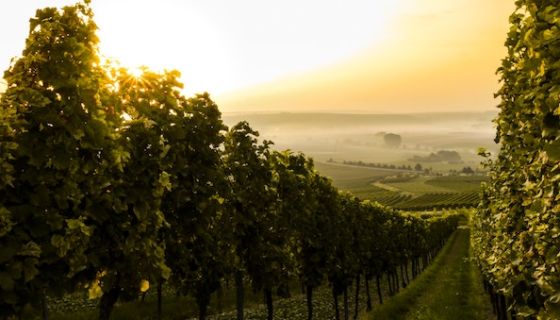Last week saw the highest winter temperatures ever recorded in the UK, with sunbathers flocking to beaches and parks across the country, blossom bedecking trees and bushes, and hibernating animals starting to emerge from their slumber. For English winemakers, however, this warm weather may prove to be a mixed blessing.
The unseasonably warm weather could well lead to budburst on English vines, signalling the start of the growing season. Many vine growers will have carried out extra pruning this week in an attempt to delay growth, and will currently be anxiously monitoring their plants, as any frost after budburst can kill the new shoots. We have to cross our fingers and hope that this is indeed the start of spring, and that there is no Beast from the East and sudden drop in temperature as there was last March.
The long-term effects of rising temperatures on English and Welsh viticulture are of course unpredictable – one major uncertainty is how a warming climate will affect patterns of rainfall – but if our climate continues to warm, we will see more and more still wine production of increasing quality, and there will be increasing experimentation with grape varieties previously considered unsuitable for the British climate. There has long been speculation that the English sparkling wine industry will benefit directly if the climate across the Channel in Champagne were to become too hot to provide the acidity needed to create world-class sparkling wine.
On a global level, a changing and warming climate will provide huge challenges for both winemakers and lawmakers. The rigid appellation system of France (along with similar DOC and DOCG systems in Spain and Italy), which stipulates grape varieties, permitted levels of alcohol and maximum grape yields, may find itself obsolete. It could be that Burgundy eventually becomes too hot to create world-class wine from thin-skinned Pinot Noir grapes, and that winemakers there are forced to switch to varieties currently grown further south in Bordeaux and the Rhône Valley – think Cabernet Sauvignon, Grenache and Syrah.
English vignerons will also have to adjust to maximise wine quality. They will need to plant varieties suited to our rapidly warming climate. This has already been happening, in the replacement of the old German varieties such as Dornfelder and Reichensteiner in favour of more classic grape varieties such as Chardonnay, Pinot Noir and even Albariño. It may not be too far-fetched to think that within 10 or 20 years we could see English versions of the late-ripening Cabernet Sauvignon, a variety currently associated with sun-soaked regions of the world such as southern France and California.
We have to remember that it was periods of warmth that permitted viticulture in the British Isles in previous eras as well as much more recently (see this entry on the history of English wine in your online Oxford Companion to Wine). So long as winemakers in this country are prepared for further temperature increases, we may well see England and Wales cement their place as producers of truly world-class wine.














